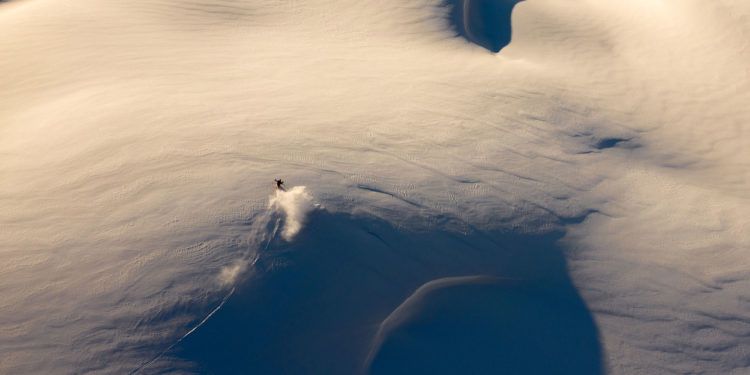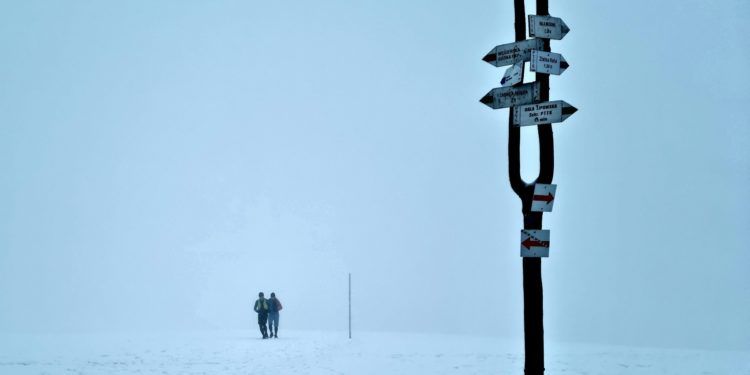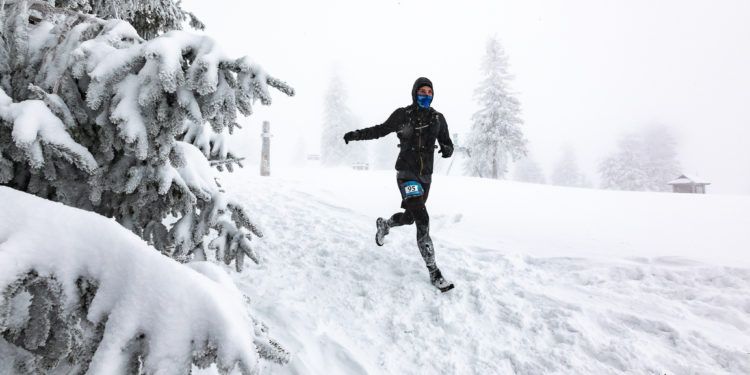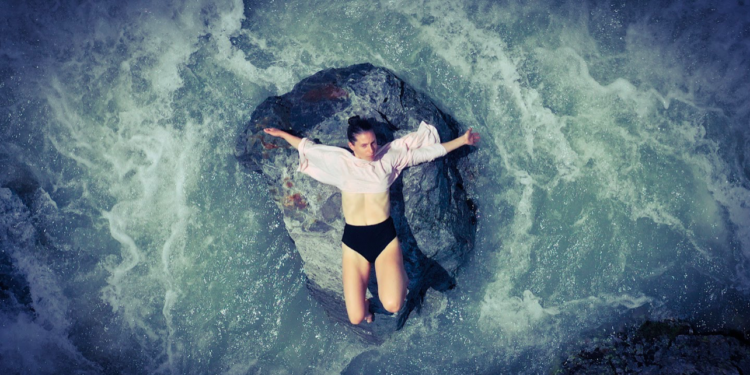The footsteps of a freerider
It’s not about giving up pleasure in the name of protecting our planet. After all, we can enjoy the mountains, enjoy skiing or snowboarding. The key is to change our approach. What it should consist of and what to do so that the snowy mountains and glaciers can be enjoyed by our grandchildren? Among other things about this with a professional snowboarder and the protagonist of the film “Shelter”, Mathieu Schaerem, is interviewed by Michal Gurgul.
How did your passion begin?
I have been fortunate that since I was a child, my family and I have often made trips to the mountains. I started out skiing, but when my older brother switched to snowboarding, I naturally wanted to do the same thing. I was 9 years old at the time. Together we looked for places in the mountains where it was fun to ride off-piste. A little later I got into freestyle and started competing in competitions.
In both snowpark and mountain competitions you quickly proved your talent. Snowboarding became a way to make money?
The first sponsor appeared when I was 16 years old. I started riding professionally at the age of 18 – that’s when I signed my first serious contract and made the decision that I would focus solely on the sport. After high school I devoted myself to freeride even more, interrupted my education for three years. At that time I started working with Absinthe Films, a major producer of snowboard films. At the age of 20, I finished competing in competitions and focused on mountains and filming.
The films there can be considered “classic”.
Yes, I did one film a year with Absinthe Films, in total eight films accumulated. These were standard images, full of beautiful shots, showing only the feat – there was no story in it. At that time I saw a big chunk of the world, visiting popular spots among professional riders in Canada or Alaska.
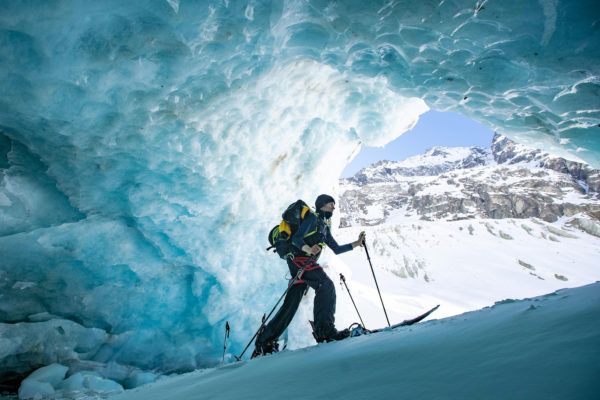
At the age of 20, I finished competing in competitions, focused on mountains and filmmaking (photo. Vernon Deck)
Your sports career was thriving, but you recognized that something was missing. You decided to go to college.
I wanted to somehow combine sport with science. Many friends studied, my brother was in geography. We talked about various topics, often about ecology. You know, I have always cared about the environment, it seemed natural to me – doing such a sport I had constant contact with nature. My brother recommended me some books on climate change. After reading them, I wanted to learn even more about the subject, so I decided to study engineering and environmental protection. Besides, I simply missed studying a bit, and was aware that a career as an athlete would not last forever – I needed a plan for later on.
You graduated from good Swiss universities, deepened your knowledge in the area you were interested in. How did it affect your approach to life or board riding?
During my studies, my awareness of the impact of climate change on the mountains and the environment in general gradually grew. I didn’t feel comfortable with the way my sports career was going. I realized that I had to change something.
Why?
A professional snowboarder is constantly traveling the world. The associated cost to the environment is very high. Transportation and electricity generation from coal are responsible for most of Europe’s CO2 emissions. Snowmobiles and helicopters are also often used, which pollute the air and make noise and frighten animals. I decided to reduce my impact on CO2 emissions. I focused on the Alps, started exploring the nearest massifs, which I didn’t know very well at the time. While splitboarding, I discovered a lot of fantastic places to ride and also to film.
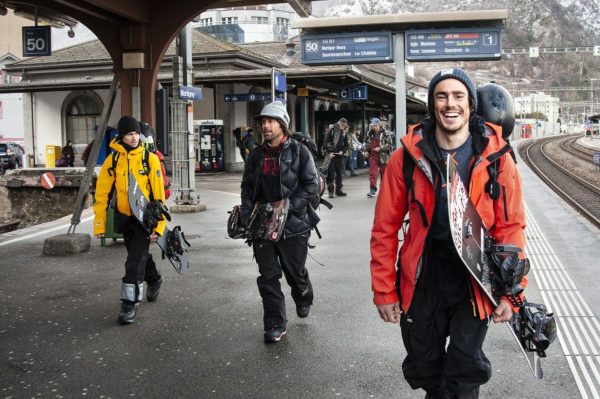
I decided to reduce my impact on CO2 emissions. I focused on the Alps, started exploring the nearest massifs
Not only did you give up lifts, scooters and helicopters, but also your car.
In Switzerland, the rail network is well organized. Since then, I have tried to use trains whenever possible. I wanted to see if it was possible to be a professional snowboarder and not own a car, using only public transportation, whose carbon footprint is much smaller.
Was it a media project by design?
No. At first, I just did it for myself (and the planet, of course). I didn’t inform anyone about my change of approach and didn’t think about the film at the time. This is how I operated for six years. In spite of this, I managed to maintain a partnership with a major manufacturer and still make videos.
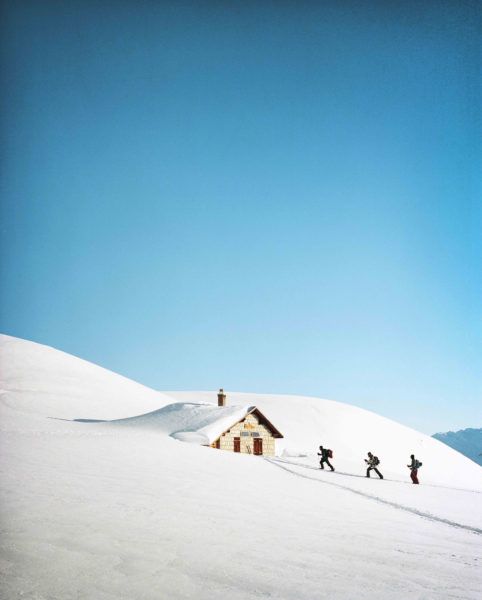
photo. Jérôme Tanon
Your friends have noticed the change? How they reacted?
Of course. At some point, thanks to friends, this idea turned into a script idea. We decided it was a topic worth covering in a snowboard film. A universal topic and important for the entire outdoors.
This is how the film “Shelter” was made. This was a special project for you?
In many ways. The film became the result of changes that I have been implementing in my life for many years. This is my first film whose main thread is not sports stunts.
Then what is it?
Our basic idea was to emphasize the need to protect what we love. The film shows the adventures of a group of friends who hike from hut to hut, experiencing the mountains in a very traditional way. Less about consumerism, less about haste. We talk a lot, absorb nature. Eventually we manage to cut a few saturated lines, but this is secondary. It is the mountains and glaciers that are the main characters of the story. It seems to me that by telling about environmental problems with a film, which is cool, we have a chance to reach more people than for example. scientist with a lecture.
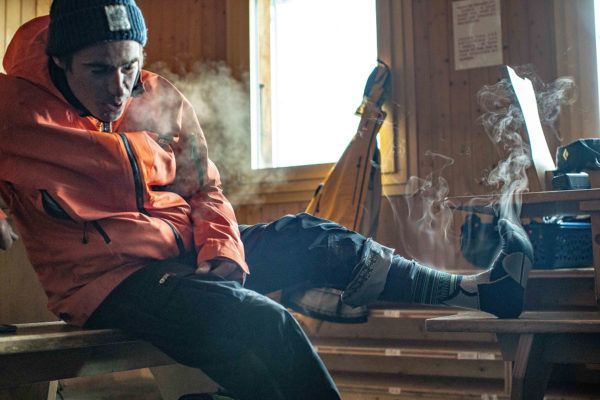
photo. Vernon Deck
Today the environmental crisis is being talked about basically everywhere. Awareness of the problem is important, but finding solutions is even more important.
It’s one of the things I learned in college. I want to show that such solutions exist. If professional riders are able to give up a few amenities, others can do it too – companies, riders, skiers. We can still do what we love, have heaps of fun and do less harm at the same time. With this, the mountains will also be “enough” for future generations.
Do you think we should all switch to trains?
Of course not. I am aware that this is often impossible, and I don’t want to tell anyone that they should sell or leave their car in the garage. I show one possibility, but there are also intermediate solutions, such as car-sharing. I hope that traveling by public transportation will be easier and more comfortable in the future, but smart politicians are needed to make this happen. Currently only 5% of skiers and snowboarders use public transportation, so the opportunities for improvement are enormous.
However, this is only a small part of a larger problem.
It’s true. Many areas need work and change. I think we don’t need to cite scientific evidence of the climate crisis here. Some of the consequences of these changes are obvious, others are more complicated and less obvious. That’s why I decided to focus on the most important issues for mountain people, talk to the mountain community – it’s easier and more direct.
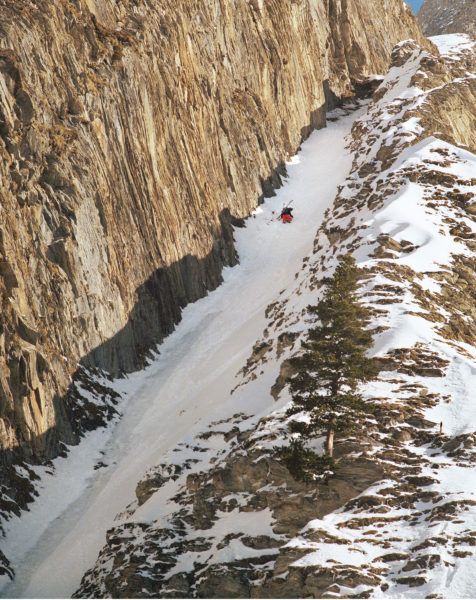
Léo Taillefer / photo. Jérôme Tanon
Why is this so important to you?
I wish my grandchildren could see glaciers in the Alps. If we don’t change our behavior, it won’t happen. The lack of glaciers will entail a number of dramatic consequences, such as droughts, heat waves and other weather anomalies. We have to fight the crisis, this is not debatable.
Probably the most important thing is not to hurt yourself. Often we want to accomplish something too fast and then an accident or injury occurs. We lose a season and the effect is the opposite – we develop much more slowly. Freeride also requires good equipment, avalanche training and continuous improvement of knowledge about the dangers in the mountains. Learn slowly, step by step and listen to your inner voice – I have managed to avoid injury for the past 8 years and it feels great.
Pro Tip from Mat
Well, but what should Polish skiers and snowboarders do? High mountains are scarce, winters are getting shorter…
I am aware that I have a better position. It is understandable that Poles want to go to the Alps, and of course they have every right to do so. I can only hope that in the future there will be rail connections that are fast and convenient enough to be a viable alternative to airplanes, which today are incomparably faster and much cheaper. Unfortunately, their carbon footprint is the largest. Try to use trains if possible, and if not, fill cars to the brim.
Is skitouring itself ecological?
In my opinion, this form of moving in the mountains allows you to experience a cool adventure, regardless of the conditions. While hiking, we can enjoy the approach, the views – if we do it in summer, why shouldn’t the hike itself be a pleasure in winter? If you ride only in the resorts, trying to descend as many times as possible in a day, then you necessarily have to travel, chase good conditions. Switching to a turkey, you change your perspective, discover a new kind of pleasure. And from time to time good conditions also happen.
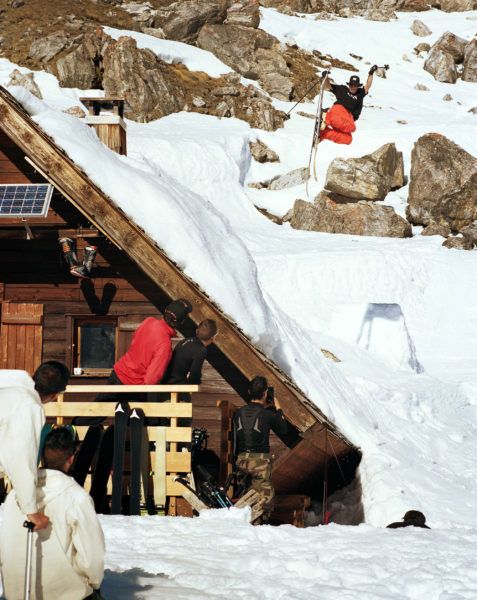
Léo Taillefer / photo. Jérôme Tanon
This philosophy defines your driving style. It can also be seen in your approach to shaping.
I like to take advantage of the terrain, searching for natural obstacles is more challenging, you need to learn to “read” the mountains. Of course, preparing a hop with a shovel has no impact on the environment, but when I don’t do it, I leave behind fewer footprints, it’s more consistent. I like this philosophy: it is you who must adapt to the environment, not adapt the environment to your needs. We are too used to it, too often we do it to the detriment of the planet. We talk about it in the video. I hope we were able to send a positive message.
